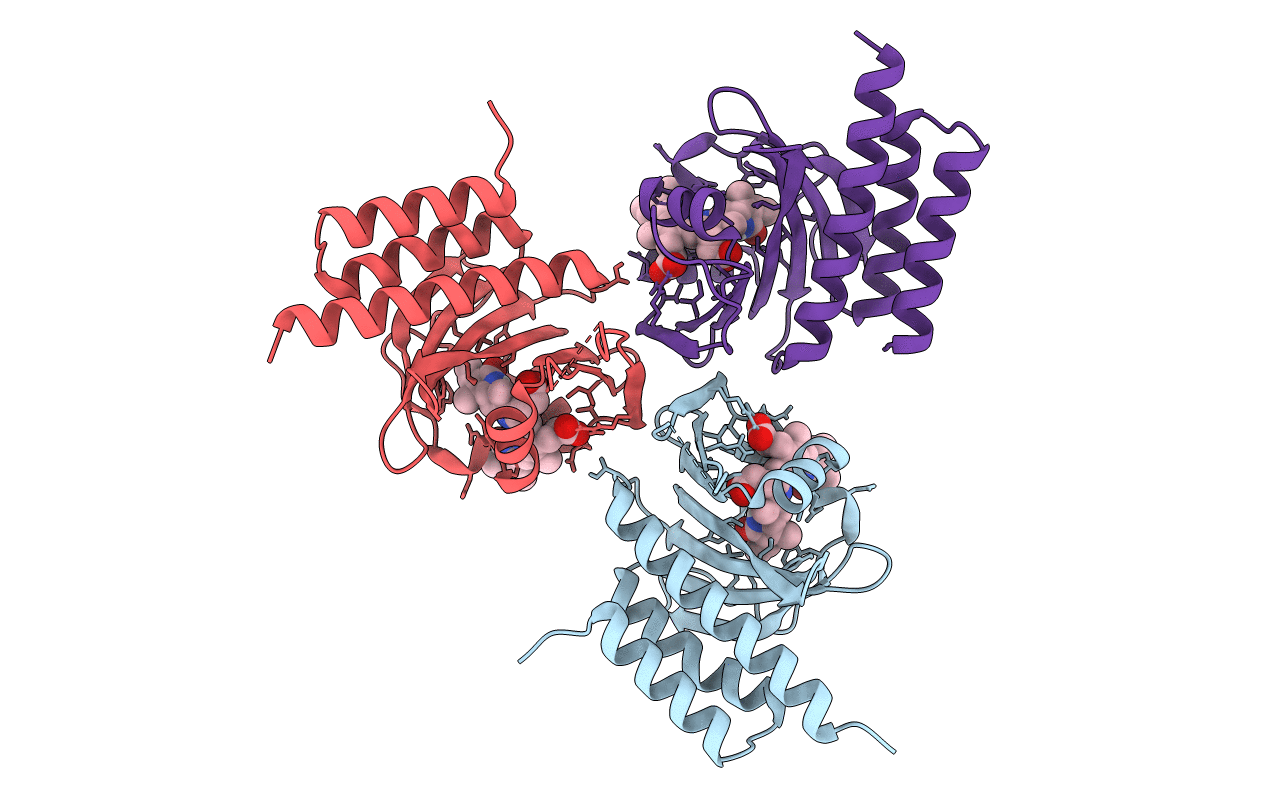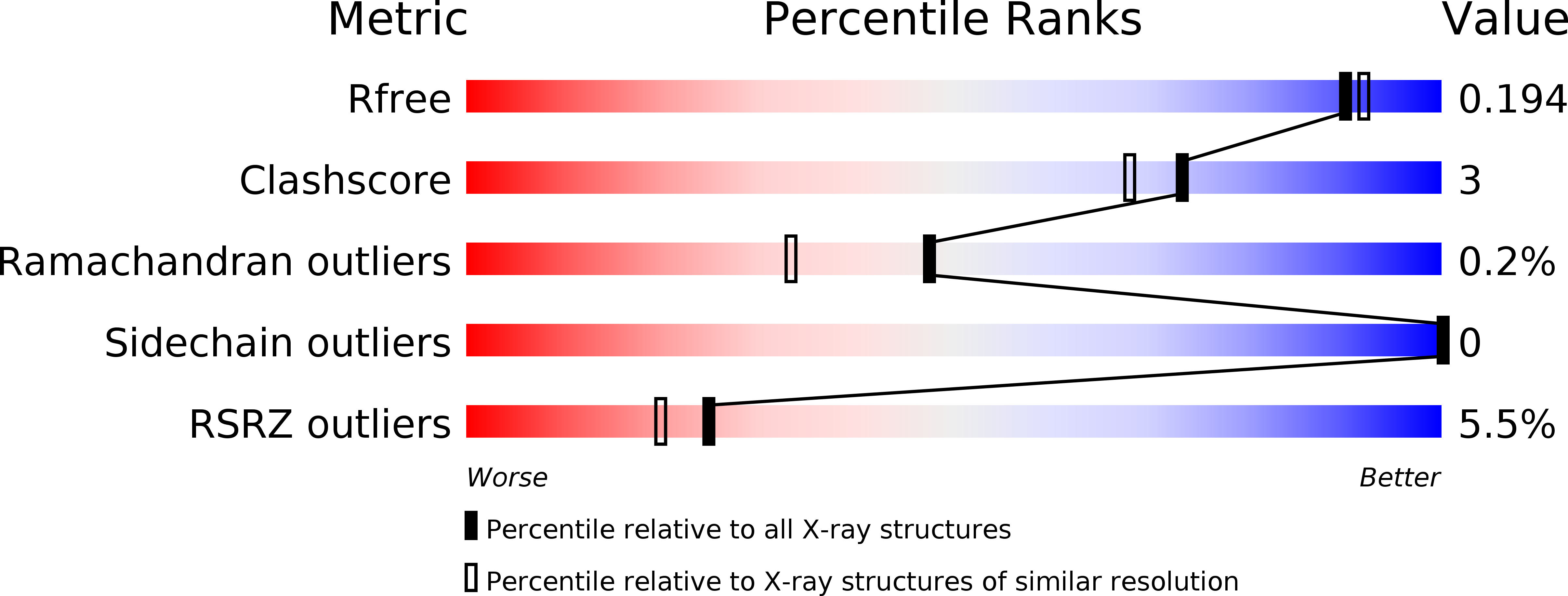
Deposition Date
2019-05-15
Release Date
2020-05-20
Last Version Date
2024-10-23
Entry Detail
PDB ID:
6OZB
Keywords:
Title:
Crystal structure of the phycoerythrobilin-bound GAF domain from a cyanobacterial phytochrome
Biological Source:
Source Organism:
Host Organism:
Method Details:
Experimental Method:
Resolution:
1.80 Å
R-Value Free:
0.19
R-Value Work:
0.15
R-Value Observed:
0.15
Space Group:
P 31 2 1


